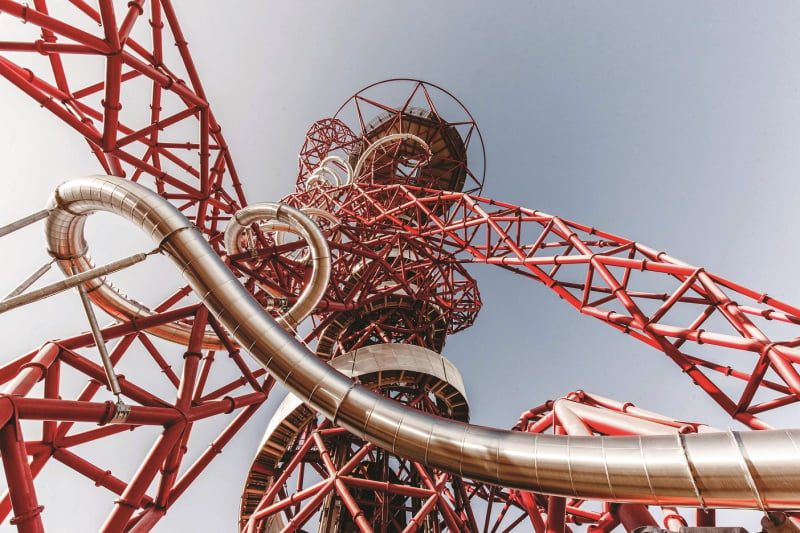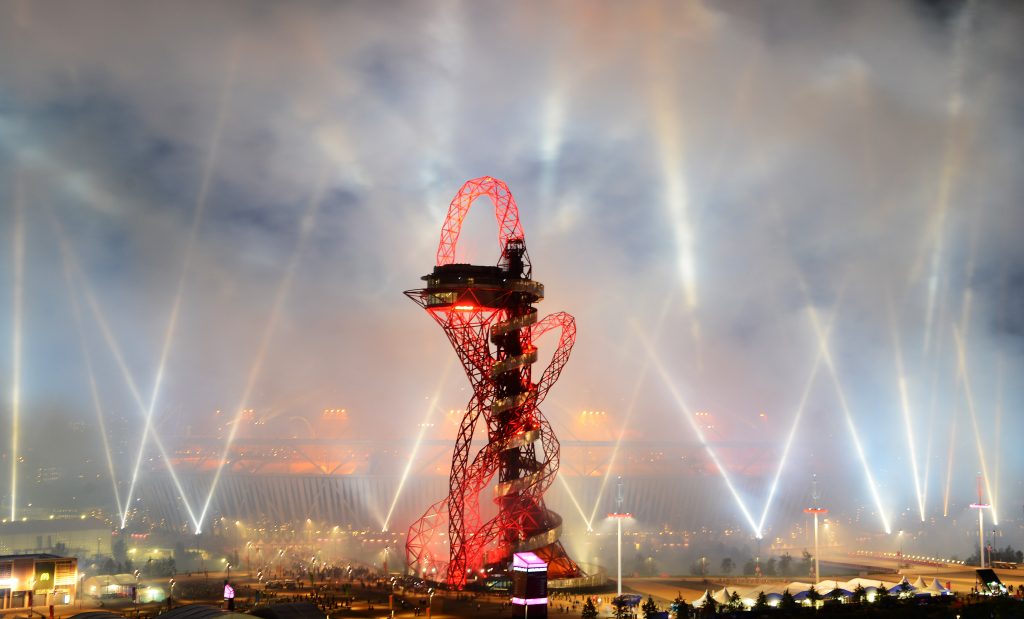Politics
Commissioned by Boris Johnson as the Eiffel Tower of London, Anish Kapoor’s ‘Orbit’ Is Now More Than $15 Million in Debt
In a failed attempt to draw visitors, the work was re-designed by Carsten Höller to make it the world's longest slide.

In a failed attempt to draw visitors, the work was re-designed by Carsten Höller to make it the world's longest slide.

Sarah Cascone

The mega-sculpture in East London co-designed by Anish Kapoor for the 2012 Olympics at the request of Boris Johnson, the former mayor of the city and now the UK’s prime minister, has seen a sharp fall in visitor numbers and is falling deeper and deeper into debt.
The Arcelor Mittal Orbit, as it is now called, has landed the London Legacy Development Corporation, which runs the park in which it sits, £13 million ($15.7 million) in debt as interest mounts on the loan provided by the Indian steel tycoon Lakshmi Mittal for its construction, according to the Art Newspaper. (Originally christened Orbit, the artwork is now named after the ArcelorMittal steel company, of which Mittal is chairman.)
Johnson, who selected Kapoor’s proposal following a design competition, envisioned Orbit as a major tourist attraction that would become a symbol of the city, akin to the Eiffel Tower in Paris or the Statue of Liberty in New York.
But critics slammed the sculpture upon its completion, and the public wasn’t particularly enamored of it either. In 2016–27, 193,000 people visited the site. That number has plummeted to 155,000 in 2018–19.

The Orbit stands out in front of the Olympic Stadium during the 2012 Olympics opening ceremony at the Olympic Park in London, England. Photo by Mike Hewitt/Getty Images.
To boost attendance, Johnson insisted that Kapoor revamp the work to make it a more appealing attraction. The artist—who is not a fan of Johnson—wasn’t pleased, but proposed working with another artist, Carsten Höller, to turn the artwork into the world’s tallest and longest slide. When Höller’s addition to Orbit was unveiled in 2016, the price to visit the observation deck and slide to the bottom was £17.50 ($21), and organizers hoped that ticket prices would boost revenue.
Built in Queen Elizabeth Olympic Park in East London, the piece was designed by Kapoor with engineer Cecil Balmond. Orbit is the tallest work of public art in all of the UK, at a towering 376 feet.
At the time that he unveiled plans for the work, Johnson was confident the project would be successful. “Of course some people will say we are nuts—in the depths of a recession—to be building Britain’s biggest ever piece of public art,” he told the Guardian. “[But I am] certain that this is the right thing for the Stratford site, in games time and beyond.”